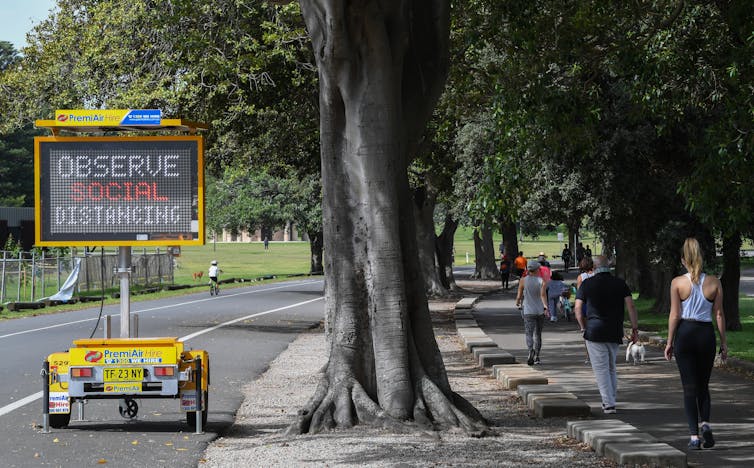Coronavirus May Wane This Summer, But Don’t Count on Any Seasonal Variation to End the Pandemic

Will SARS-CoV-2, the virus that causes COVID-19, fade away on its own this summer?
After all, other viruses – including influenza and respiratory syncytial virus (RSV), which causes bronchiolitis in little children – are mostly seen in the winter.
The National Academies’ Standing Committee on Emerging Infectious Diseases and 21st Century Health Threats recently addressed the question of whether SARS-CoV-2 will follow the same pattern. The group of experts corralled the research that’s been done so far – much of it not yet peer-reviewed – to assess the evidence.
While there is some reason to hope that things may get better as the weather warms up, there is plenty of reason for the U.S. to keep its guard up.
Are heat and humidity reason for hope?
Although the U.S. is early in the course of the pandemic, there is evidence from other countries that SARS-CoV-2 spreads more rapidly in cold, dry weather.
One preprint study of 30 Chinese provinces showed that the number of COVID-19 cases went down by between 36% and 57% for every 1.8 degree Fahrenheit increase in temperature. When temperatures held steady in the low 40s F, the number of cases went down between 11% and 22% with each 1% increase in relative humidity (how much water is in the air).
A larger preprint study looking at 310 regions in 116 countries found that 11% more cases were reported when the temperature went down 9 degrees, the relative humidity went down 10% and when the wind speed went up.
Laboratory research also suggest that the virus survives longer in cold conditions. One study showed that SARS-CoV-2 lasts for 14 days at 40 F in lab media but is gone after one day at 98.6 F.
These and other studies suggest that warm, humid weather may slow the spread of this virus, although not all commentators agree.
New research on this topic appears almost daily, and scientists are watching to see what happens as summer comes to the Northern Hemisphere.
Summer in the Southern Hemisphere hasn’t stopped SARS-CoV-2 from spreading in Australia. James D. Morgan/Getty Images News via Getty Images
Which clues call for caution?
COVID-19 is already spreading in many parts of the world where it’s hot, including Australia and South America, demonstrating that high temperatures are not enough to stop the disease.
The most important reason to be concerned about ongoing spread is the fact that this is a brand new virus for humans, so almost everyone is susceptible to being infected.
In fact, weather actually appears to play a minor role in the rate at which this virus spreads.
Other influences on infection rates include individual behaviors, cultural practices, geography, income and living conditions. Public health practices such as social distancing, the intensity of testing for infection, contact tracing, quarantine of people who are exposed and isolation of people who are actually infected also play a big role in how the coronavirus spreads.
The news from other viral diseases is not encouraging either. The two most serious coronavirus diseases that are closely related to COVID-19, the first SARS outbreak and MERS, did not vary with the seasons after they emerged. In fact, MERS is still found year-round in the Middle East, where it is hot and dry. Pandemic influenza infections have emerged at different times of the year as well.
What should we do?
The long-term solution to SARS-CoV-2 will be to develop a safe and effective vaccine. This work is proceeding at unprecedented speed, but it will still take anywhere from months to a few years and will require trials involving thousands of people and massive international leadership and collaboration.
Until there’s a vaccine, prevention will require avoiding exposure to people who can spread the virus. Communities need to test people to find out who is contagious and engage in serious contact tracing, quarantine and isolation. Scientists need to learn more about how to determine if someone is immune and how long immunity lasts, a big open question at the moment. As individuals, each of us will need to follow expert scientific advice about good hygiene practices and distancing.
SARS-CoV-2 is likely to keep circulating until the human population has widespread immunity, which hopefully will come not from an unchecked pandemic but from developing and deploying a safe and effective vaccine.
[You’re too busy to read everything. We get it. That’s why we’ve got a weekly newsletter. Sign up for good Sunday reading. ]![]()
Ellen Wright Clayton, Professor of Pediatrics and Law and Health Policy, Vanderbilt University
This article is republished from The Conversation under a Creative Commons license. Read the original article.

